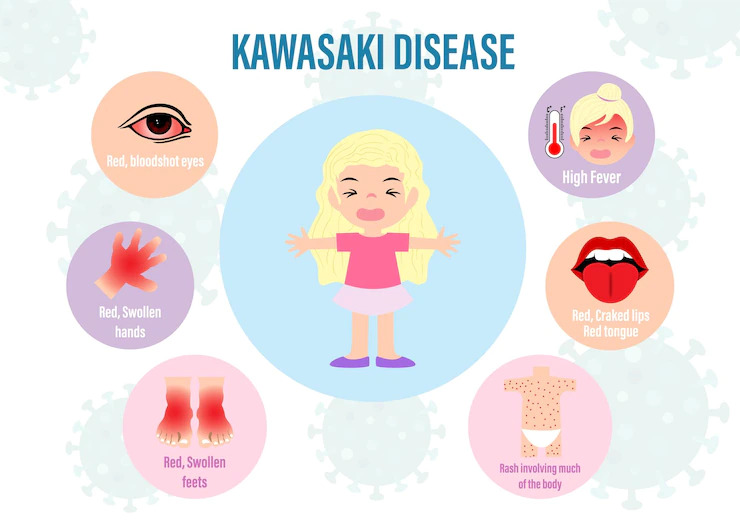Hydropic Gallbladder - How To Diagnose And Cure It
A hydropic gallbladder is an overstretched gallbladder packed with mucoid or transparent and watery fluid. It is usually non-inflammatory and arises from a gallbladder outlet blockage, usually caused by an impacted stone in the neck or the cystic duct. The most prevalent cause of hydropic gallbladder is obstruction of the cystic duct, which limits gallbladder emptying.
Author:Suleman ShahReviewer:Han JuDec 23, 20222 Shares356 Views

A hydropic gallbladderis an overstretched gallbladder packed with mucoid or transparent and watery fluid.
It is usually non-inflammatory and arises from a gallbladder outlet blockage, usually caused by an impacted stone in the neck or the cystic duct.
The most prevalent cause of hydropic gallbladder is obstruction of the cystic duct, which limits gallbladder emptying.
Gallstones, tumors, strictures, or external compressions are the most common causes of such blockages.
Gallbladder Hydrops Causes
Gallbladder hydrops is most often caused by a gallstone blocking the cystic duct, causing an excessive quantity of mucus, water, or other clear liquid to collect.
Between meals, the gallbladder stores and concentrates bile.
It plays a vital role in controlling bile composition via several absorptive and secretory enzymes.
Changes in gallbladder motor activity may cause gallstones and modify the bile acid composition.
If the gallbladder is not working correctly, the bile may not be fully evacuated, leading to gallstone development.
Gallstones may be as little as a grain of sand or as big as a golf ball, and they can be single or many.
Gallstones may get lodged in the cystic duct, the neck of the gallbladder.
The gallbladder mucosa reabsorbs the bile salts, gradually replaced by clear, watery mucus.
This puts pressure on the gallbladder walls, causing them to enlarge. The mucosa will be replaced with clear/watery mucus over time.
Hydropic Gallbladder Symptoms
The clinical presentation is acute right upper quadrant abdominal pain, nausea, and vomiting.
Examination reveals upper abdominal tenderness, often with a palpable mass.
Diagnosis is aided by ultrasound findings of a distended gallbladder with a thin or regular wall and no echo densities.
Hydropic Gallbladder Radiology
Radiographic characteristics of a hydropic gallbladder include measurements of more than 4 centimeters transversely and more than 9 centimeters longitudinally and straight or convex margins.
Hydropic Gallbladder Treatment
The average adult gallbladder is 7-10 cm in length and 3-4 cm in transverse diameter.
An enlarged gallbladder is considered inflammatory; cholecystitis may result in significant problems such as gallbladder rupture.
Blood tests, USG (abdominal or endoscopic), CT scan, or a hepatobiliary iminodiacetic acid (HIDA) scan are all used to detect this illness.
Acute therapies include intravenous hydration, analgesics, and, in rare cases, antibiotics.
The problem is often recurring, necessitating surgical treatment with cholecystectomy.
Hydrops Of Gallbladder Kawasaki Disease
Kawasaki disease is a severe febrile illness characterized by multiorgan vasculitis of unclear origin that usually affects babies and children.
The condition mainly affects children under the age of five.
Children may develop aseptic meningitis, hyperemic tympanic membrane, or uveitis during the acute phase.
Neurologic consequences are uncommon and include facial nervepalsy, seizures, and ataxia cerebral infarctions.
Diarrhea, vomiting, stomach discomfort, and pneumonitis are other typical symptoms.
Gallbladder hydrops may develop during the first two weeks of sickness; they may result from periportal inflammation spreading to the cystic duct, usually self-limiting.
In the acute phase, arthritis and arthralgia are prevalent.
Patients with this condition have also exhibited erythema and induration at the recent Bacille Calmette-Guérin vaccine site, testicular edema, and peripheral gangrene.
People Also Ask
Can Hydrops Go Away?
The prognosis for infants born with hydrops fetalis is very variable and depends on the illness's underlying etiology.
The survival rate, on the other hand, is relatively low.
More than half of all infants born with the syndrome pass away either before or shortly after delivery.
How Do You Treat A Distended Gallbladder?
- Fasting to allow the gallbladder to relax.
- Fluids to avoid dehydration
- Medication for pain.
- Antibiotics are used to treat infections.
- The gallbladder is removed.
- Draining the gallbladder to cure and prevent infection spread.
- Removing gallstones from the location where the common bile duct is obstructed
Is Gallbladder Hydrops A Surgical Emergency?
Acute acalculous gallbladder disease is an uncommon consequence of HAV infection that should be recognized in any kid experiencing right upper quadrant abdominal discomfort, soreness, or mass, leading to surgical emergency in rare cases.
Is Hydrops Genetic?
Between the years 1976 and 1988, 1790 prenatal and neonatal autopsies were done, and all of them were examined, in hindsight, to determine whether or not hydrops was present.
There were thirty instances of hydrops detected in the prenatal autopsy group (5.5 percent), and there were thirty-five cases found in the newborn autopsy group (2.8 percent). Thirty-five percent of the cases were due to genetic factors.
Conclusion
In clinical practice, having a solid understanding of the significance of the gallbladder and its function is essential.
It's possible to end up with a hydropic gallbladder if the cystic duct of the gallbladder is blocked.

Suleman Shah
Author
Suleman Shah is a researcher and freelance writer. As a researcher, he has worked with MNS University of Agriculture, Multan (Pakistan) and Texas A & M University (USA). He regularly writes science articles and blogs for science news website immersse.com and open access publishers OA Publishing London and Scientific Times. He loves to keep himself updated on scientific developments and convert these developments into everyday language to update the readers about the developments in the scientific era. His primary research focus is Plant sciences, and he contributed to this field by publishing his research in scientific journals and presenting his work at many Conferences.
Shah graduated from the University of Agriculture Faisalabad (Pakistan) and started his professional carrier with Jaffer Agro Services and later with the Agriculture Department of the Government of Pakistan. His research interest compelled and attracted him to proceed with his carrier in Plant sciences research. So, he started his Ph.D. in Soil Science at MNS University of Agriculture Multan (Pakistan). Later, he started working as a visiting scholar with Texas A&M University (USA).
Shah’s experience with big Open Excess publishers like Springers, Frontiers, MDPI, etc., testified to his belief in Open Access as a barrier-removing mechanism between researchers and the readers of their research. Shah believes that Open Access is revolutionizing the publication process and benefitting research in all fields.

Han Ju
Reviewer
Hello! I'm Han Ju, the heart behind World Wide Journals. My life is a unique tapestry woven from the threads of news, spirituality, and science, enriched by melodies from my guitar. Raised amidst tales of the ancient and the arcane, I developed a keen eye for the stories that truly matter. Through my work, I seek to bridge the seen with the unseen, marrying the rigor of science with the depth of spirituality.
Each article at World Wide Journals is a piece of this ongoing quest, blending analysis with personal reflection. Whether exploring quantum frontiers or strumming chords under the stars, my aim is to inspire and provoke thought, inviting you into a world where every discovery is a note in the grand symphony of existence.
Welcome aboard this journey of insight and exploration, where curiosity leads and music guides.
Latest Articles
Popular Articles
